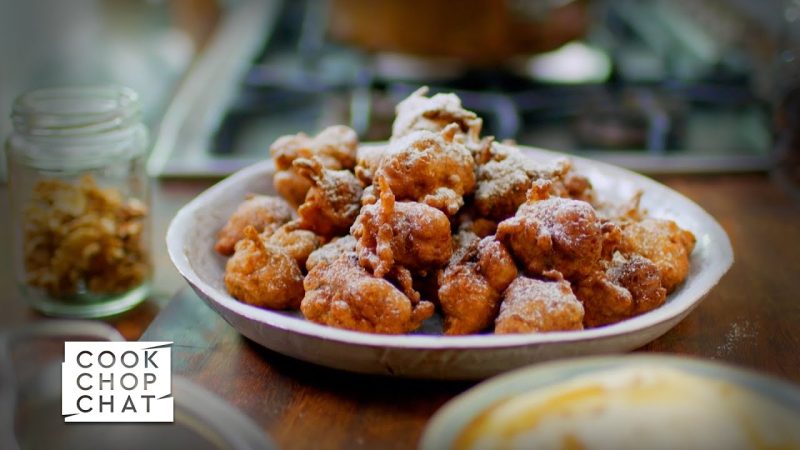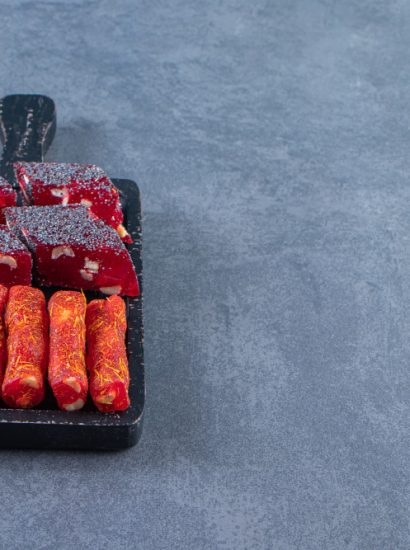Fried Carrot Cake—better known locally as chai tow kway—is a beloved street-food staple across Singapore and Malaysia. Despite its misleading name, this dish doesn’t contain carrots. Instead, it stars steamed radish (white turnip) rice cakes stir-fried until gloriously crispy, then tossed with aromatic aromatics and savory eggs. Whether you’re craving nostalgia or curious to try something new, this recipe brings the authentic hawker experience straight to your pan.
With this guide, you’ll master the method for both black (sweet soy) and white (garlic-egg) versions, plus a handy mix-and-match technique so you can enjoy the best of both worlds.
Understanding Chai Tow Kway: History & Variations
Traditionally made with radish rice cakes, chai tow kway has been a staple in Southeast Asian hawker settings for generations. It originated from Chinese immigrant communities who turned Cali-style radish cakes into something uniquely local.
- White Version (Chai Tow Kway): This version is all about garlic, eggs, and chives. It’s simpler and highlights the savory umami of egg clumps in the mix.
- Black Version (Sha Cha Carrot Cake): Here, the rice cakes are coated with sweet soybean sauce, giving a dark sheen and rich complexity.
- Half-and-Half: Most hawker stalls offer a half-and-half option—sometimes even called duo—which is a delicious dual experience.
Through this recipe, you’ll learn how to prepare all three styles so you can serve what you love most.
Ingredients & Prep: What You’ll Need
This section covers everything you need for two generous servings.
For the Radish Rice Cake:
- 200 g rice flour
- 100 g tapioca starch or cornstarch
- 500 ml water
- 200 g Chinese radish (daikon), finely grated
- ½ tsp salt
For the Stir-Fry:
- 2 Tbsp vegetable oil
- 4 garlic cloves, minced
- 2 large eggs
- 50 g chives or spring onion, chopped
- 1 Tbsp sweet black soy sauce (kecap manis or molasses soy)
- 1 Tbsp light soy sauce
- 1 tsp fish sauce (optional)
- 1 tsp sugar
- ½ tsp white pepper
Optional Garnishes:
- 1 Tbsp fried shallots
- 1 tsp chili flakes or sliced fresh chili
- Cilantro
Step 1 – Making the Rice Cakes
- Prepare your pan: Lightly oil a 20 cm round heatproof dish or cake pan.
- Mix dry ingredients: Whisk rice flour, starch, and salt in a bowl.
- Combine radish & water: Add grated daikon and water, stir well.
- Steam for 30 mins: Cover and steam until set and firm.
- Rest and slice: Allow to cool, then slice into 1 × 2 cm cubes or 1 cm strips.
Pro Tip: For texture, slightly dry the cakes by letting them chill uncovered in the fridge for 15–20 mins.
Step 2 – Frying to Crispy Perfection
- Heat the wok: Get your wok blazing hot, then add 2 Tbsp of oil.
- Sear the rice cakes: Spread out the cubes/strips; let them sit undisturbed for 2–3 minutes to crisp. Flip to brown others.
- Separate versions from here.
White Version:
- Push rice cakes aside, add garlic, and briefly sauté.
- Whisk in eggs, let set for 10 secs, scramble through cakes.
- Add soy, fish sauce, sugar, and pepper. Toss gently.
- Finish with chives and cooked through.
Black Version:
- After crisping, toss in garlic for one minute.
- Add both soy sauces, sugar, pepper. Stir until rice cakes are glossy.
- Crack eggs directly and fold in.
- Garnish with chives.
Half‑and‑Half:
- Dedicate one side of the wok for white, the other for black. Cook and serve on each half of the plate.
Serving It Up: Presentation & Garnishes
Present your fried carrot cake with these touches:
- Transfer to a clean plate or banana leaf for tradition.
- Sprinkle with crispy shallots and fresh cilantro.
- Add chili flakes or sambal on the side.
- Serve hot alongside a soothing drink like soy milk or kopi.
Troubleshooting & Tips
Splitting cakes: Refrigerate the steamed cakes for easier slicing.
Baking vs. steaming: Only steam creates the right texture; avoid baking or microwave.
Crispiness tips: Use a thin, well-seasoned wok and high heat. Don’t overcrowd.
No chives? Use green onions or thin-leaf spinach.
Egg distribution: Let eggs set briefly before stirring to create stringy egg clusters.
Customizing Your Carrot Cake
Adapt your approach for fun twists:
- Seafood fusion: Add shrimp or salted egg yolk near the end.
- Vegan version: Skip eggs and fish sauce; use extra garlic, ginger, and black bean sauce.
- Extra spice: Stir in sambal or hot chili oil.
- Mixed textures: Add soft tofu cubes with eggs for soft-meets-crisp contrast.
Conclusion
Fried Carrot Cake is more than a delicious dish—it’s a slice of Southeast Asian culture and tradition. With this easy-to-follow recipe, you’ll be making restaurant-quality chai tow kway right in your home kitchen. From steaming the rice cakes to perfecting your wok-fried crisp, every step brings you closer to achieving that golden, savory delight. Remember to enjoy the process, experiment with variations, and savor each flavorful, crispy mouthful—just like you’re back at a hawker stall.
FAQs
1. Is carrot cake actually made with carrots?
No—the name refers to radish (white turnip), not actual carrots. The result is savory, not sweet.
2. How do I prevent the rice cakes sticking to the wok?
Ensure high heat, add enough oil, don’t stir too early, and use a non-stick or well-seasoned wok.
3. Can I make the rice cake ahead?
Yes—steam and cool, then wrap tightly or refrigerate for up to 2 days before slicing and stir-frying.
4. What if I don’t have sweet soy sauce?
Mix light soy sauce with 1 tsp of brown sugar or molasses for similar flavor and color.
5. Why are the eggs clumpy and stringy?
Let scrambled egg set slightly before stirring the rice cakes—you’ll get perfect wispy, clumped egg ribbons.
Also read: Easy Mùi Fan Recipe for Beginners – Full of Aroma & Flavor









